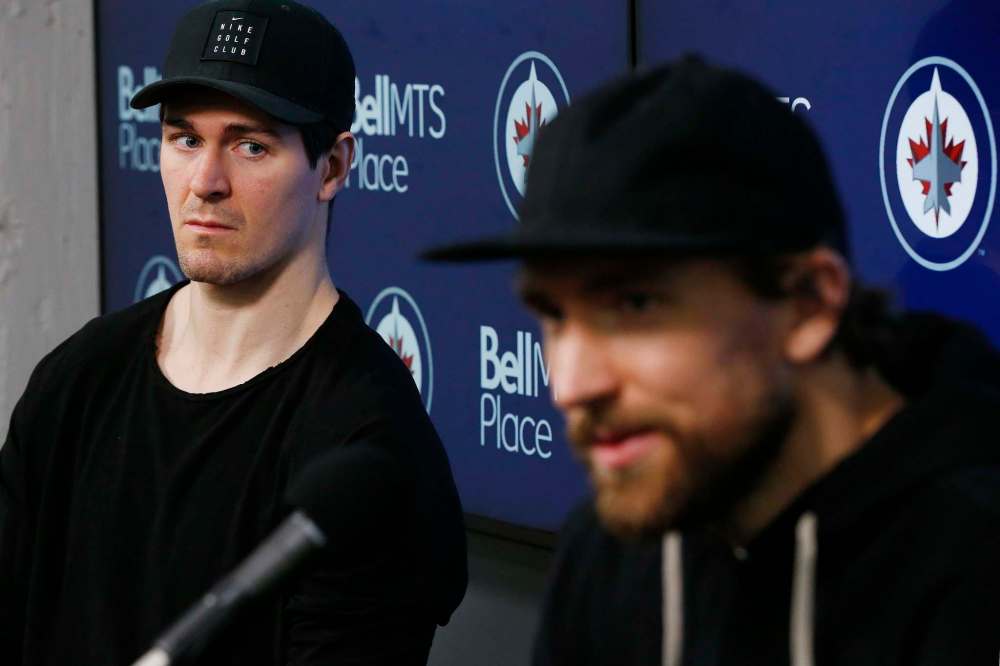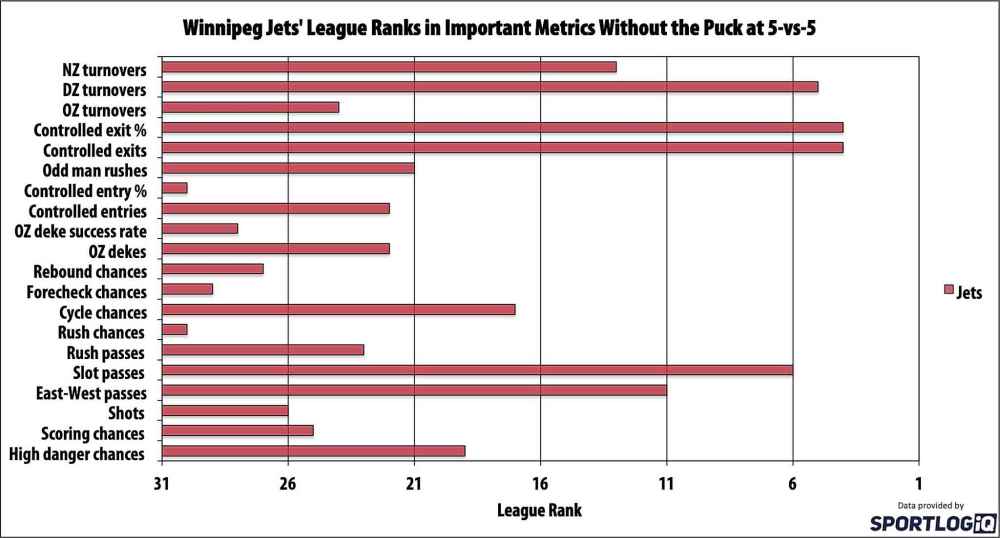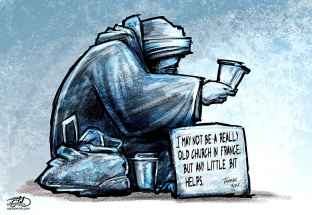Wheeler, Scheifele key parts of Jets’ problem — and solution
Read this article for free:
or
Already have an account? Log in here »
To continue reading, please subscribe:
Monthly Digital Subscription
$0 for the first 4 weeks*
- Enjoy unlimited reading on winnipegfreepress.com
- Read the E-Edition, our digital replica newspaper
- Access News Break, our award-winning app
- Play interactive puzzles
*No charge for 4 weeks then price increases to the regular rate of $19.00 plus GST every four weeks. Offer available to new and qualified returning subscribers only. Cancel any time.
Monthly Digital Subscription
$4.75/week*
- Enjoy unlimited reading on winnipegfreepress.com
- Read the E-Edition, our digital replica newspaper
- Access News Break, our award-winning app
- Play interactive puzzles
*Billed as $19 plus GST every four weeks. Cancel any time.
To continue reading, please subscribe:
Add Free Press access to your Brandon Sun subscription for only an additional
$1 for the first 4 weeks*
*Your next subscription payment will increase by $1.00 and you will be charged $16.99 plus GST for four weeks. After four weeks, your payment will increase to $23.99 plus GST every four weeks.
Read unlimited articles for free today:
or
Already have an account? Log in here »
Hey there, time traveller!
This article was published 23/04/2019 (2425 days ago), so information in it may no longer be current.
It was an unceremonious end to a season that was supposed to hold much more promise than it delivered.
The St. Louis Blues eliminated the Jets in six games, including a Game 6 beating that saw the Jets outchanced 32-19, 12-5 from the inner-slot, with most of the Jets’ chances coming in the third period after the Blues had taken a three-goal lead.

Over the first 40 minutes of the game, the Blues rocketed out to a 28-8 lead in scoring chances, 10-1 from the high-danger area. The third period showed a good last-ditch effort from the Jets, but after the heartbreaking collapse in Game 5, the team just looked spent.
Whenever a team is supposed to be a Stanley Cup contender and goes out early, there are going to be recriminations over the off-season, especially when bringing back the same roster will be significantly more expensive.
Kevin Hayes was a good rental but didn’t quite have the impact of Paul Stastny last season. Brandon Tanev, Ben Chiarot and Tyler Myers are all unrestricted free agents. Patrik Laine, Kyle Connor and Andrew Copp are all restricted free agents in line for significant raises. This summer is not going to be an easy one for the Jets.
However, in this spring of upsets in the NHL, I think it’s necessary to point out that while the Jets did have home-ice advantage in the series, they finished the regular season with the same 99 points that the Blues did, their respective goal differentials after eliminating shootouts were +27 and +24 respectively, and since the calendar turned to 2019, the Blues amassed 65 points, the most of any team in the NHL; the Jets collected 47, good for 17th.
Is it really an upset if you’re playing an equal or, perhaps, even better team, despite what the standings say? That may not be satisfying, but while we can examine the matchup in the playoffs and where the Jets went wrong against the Blues, through the first five games the two teams were locked into a tight battle, with the Jets being the slightly better team in terms of skaters and the Blues getting slightly better goaltending.
In order to really figure out what the next steps are, we have to go back to the regular season.
Before the playoffs began, I went over where the Jets ranked in the NHL in a variety of metrics both with and without the puck, and while the offensive numbers didn’t blow anyone away, most of the problem appeared to be how the Jets play without the puck.
When they get their forecheck going, the Jets are still an excellent team without the puck, ranking high in forcing teams to choose to dump the puck out, and failing their controlled exits, creating a lot of offensive-zone and neutral-zone turnovers, and that style is what drove a lot of the success that they did have against the Blues.
Similarly, the Jets’ ability to close off passing lanes in their own zone remains excellent; only six teams allowed fewer passes to the slot against than the Jets did this season. If we ignore the late-season defensive collapse, we can say that for 150 or so games dating back to last year’s playoffs and regular season, the Jets were also superb at stopping chances off the cycle.
Those are the areas of strength for the Jets’ defence, but this season they were incredibly vulnerable off the forecheck and off the rush, which resulted in them allowing far too many high-danger scoring chances, less-dangerous chances and shots against.
While I’ve long been of the opinion that the Jets need another top-four defenceman — not bringing back Tyler Myers could free up the salary cap space to do that, since he plays the wrong side to pair with Dustin Byfuglien — most of the Jets’ defensive metrics improved in the playoffs against a very tough team, and we know from the season before that this roster is capable of good defensive hockey.
I don’t believe wholesale changes are necessary, though tactical changes are, and there is one elephant in the room that concerns me a little bit: the Jets have a Scheifele-and-Wheeler problem.

Last season, the Scheifele-Wheeler duo was the ultimate shot-quality argument. They were only OK at controlling shot volume but their control of high-quality plays easily made up for their lacklustre shot-attempt numbers at even-strength for a first line, and they managed to be one of the most dangerous top lines in the league.
This season, apart from a short stretch of time where Paul Maurice loaded the line up with Nikolaj Ehlers as well, that just wasn’t the case.

!function(e,t,s,i){var n=”InfogramEmbeds”,o=e.getElementsByTagName(“script”)[0],d=/^http:/.test(e.location)?”http:”:”https:”;if(/^/{2}/.test(i)&&(i=d+i),window[n]&&window[n].initialized)window[n].process&&window[n].process();else if(!e.getElementById(s)){var r=e.createElement(“script”);r.async=1,r.id=s,r.src=i,o.parentNode.insertBefore(r,o)}}(document,0,”infogram-async”,”https://e.infogram.com/js/dist/embed-loader-min.js”);
Wheeler and Scheifele still maintain a strong control of passes into the slot, but not even close to the extent that they were able to last season, and the end result was that a line that scored nearly 59 per cent of the goals last season barely managed to get above 50 per cent by year’s end.
Being above 50 per cent is still good, but for a top line with arguably your two most high-impact offensive forwards at five-on-five, you want more, and the Jets had it last season.
There isn’t an area that Scheifele and Wheeler were better at this year than last, and that’s a problem going forward if the Jets can’t figure out what went wrong for them.
The whole team suffered defensively this year and that line wasn’t immune, but at the end of the day your first line has to be driving play, not failing victim to it, and the Jets need more from both those guys.

Andrew Berkshire
Andrew Berkshire is a hockey writer specializing in data-driven analysis of the game.
Our newsroom depends on a growing audience of readers to power our journalism. If you are not a paid reader, please consider becoming a subscriber.
Our newsroom depends on its audience of readers to power our journalism. Thank you for your support.










